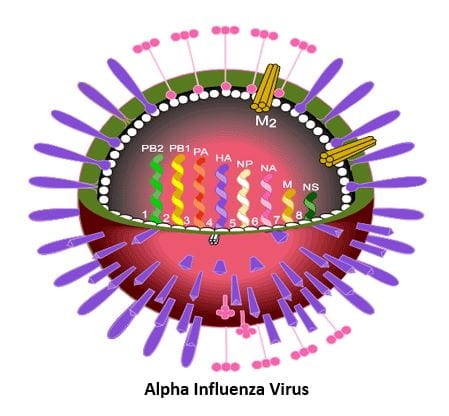Written by Eniola Kasim, BS student in medicine at University College Dublin and participant in the 2019 Institute for Public Health Summer Research Program – Public & Global Health Track
As a medical student with an interest in infectious diseases, I was really looking forward to attending this seminar. The fact that tiny microorganisms such as bacteria (which are about are about one tenth the size of a eukaryotic cell) can cause infection within humans is fascinating to me. In the past, I had focused my attention on learning more about bacteria but, through Dr. Jacco Boon’s aptly named seminar – I gained an insight into the “wonderful world of virology.”
Viruses are everywhere. On average, humans have around 37 trillion human cells, about 39 trillion bacteria cells and 380 trillion virus cells which is a startling number! It is estimated that there are 300,000 different viruses that affect mammals. However, viruses don’t just affect mammals, they infect everything from plants, fungi to bacteria. So, the totally number of different viruses in existence is much greater.
So, what is a virus? This was one of the questions posed to us by Dr. Boon during the seminar. It was an interesting moment, you could almost hear the gears grinding in our heads as we scrambled to think of a way to describe what a virus is.
Virus, I think, is one of those words we use often but, for a lot of us the understanding of what constitutes a virus is lost. In science and medicine, a virus is an infective agent too small to be seen by light microscopy that typically consists of a nucleic acid molecule (genetic material) in a protein coat. The sole goal of a virus is to replicate. To achieve this goal, it needs to hijack the replication machinery within the living cells of other organisms.
Why should we care about viruses? Well, because viruses cause huge public and global health issues in both animals and humans. For example, annually there are three to five million severe cases of people affected by the Influenza A virus, with 250 – 500,000 of these cases resulting in death. African Swine Fever virus is a virus that affects pigs, killing most infected pigs within 10 days. Outbreaks of this virus in China have placed a huge burden on their pork production impacting the country economically. New emerging viruses such as Bourbon Virus (discovered in 2015) and Alonghshan Virus (discovered in 2019), also pose a threat to public and global health.
How do we treat viral infections? Unlike bacteria which have many different therapeutic strategies, there are a limited amount of antiviral drugs currently available on the market. The biggest issue with antiviral drugs (as well as other antimicrobial therapies) is antimicrobial resistance. A feature of viruses that makes them very tricky to treat, is their ability to develop mutations that help them overcome antiviral treatments. Viral vaccinations on the other hand provide protection against infection – viral resistance to vaccination is very rare. While it is possible to get rid of some human viruses (viruses that affects humans only) societal changes such as geopolitical instability and anti-vaccination movements prevent their complete eradication.
Photo source: CSIROpedia. (2019). Influenza virus – how epidemics and pandemics emerge. [online] Available at: https://csiropedia.csiro.au/influenza-virus-how-epidemics-and-pandemics-emerge/ [Accessed 5 Jul. 2019]
